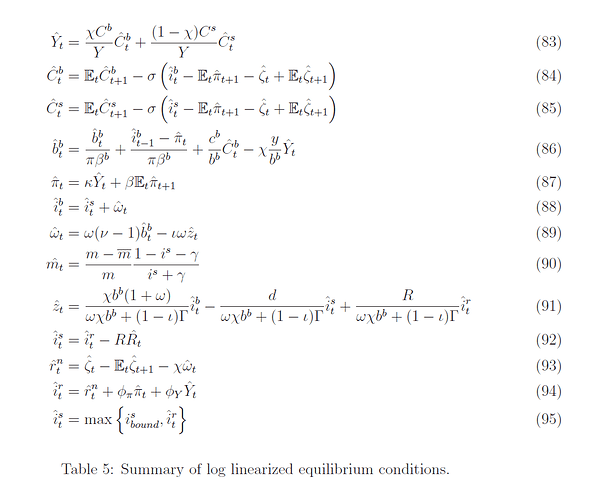I have a set of log linearized equations from Eggertsson et al. (2019)
I typed the equations as it is on Dynare with model (linear).
For example,
model (linear);
Y = (chi*C_b_ss/Y_ss)*C_b + ((1-chi)*C_ss/Y_ss)*C_s;
Then the resulting output I get will be log deviations. I defined C_b_ss, C_ss, and Y_ss on the parameter block.
My questions are as follows.
- Is it possible to get a figures like this (Figure 15 from Eggertsson et al. 2019) with my attached .mod files using Occbin? When using Occbin with my attached .mod files, I am able to get a graph for “No bound” but I am unable to get a graph for “standard model” and “negative rates”.
- If so, how do you deal with constraints (Constraint, Constraint relax) for log linearized equations on Occbin?
Below is my attached .mod files. SYP_loglinear is for linear solution, SYP_loglinear_b is for getting piecewise solution. runsim_SYP_loglinear is my Occbin file.
SYP_loglinear.mod (2.6 KB) SYP_loglinear_b.mod (2.7 KB)
runsim_SYP_loglinear.m (3.3 KB)
Any help would really be appreciated.
Thank you

